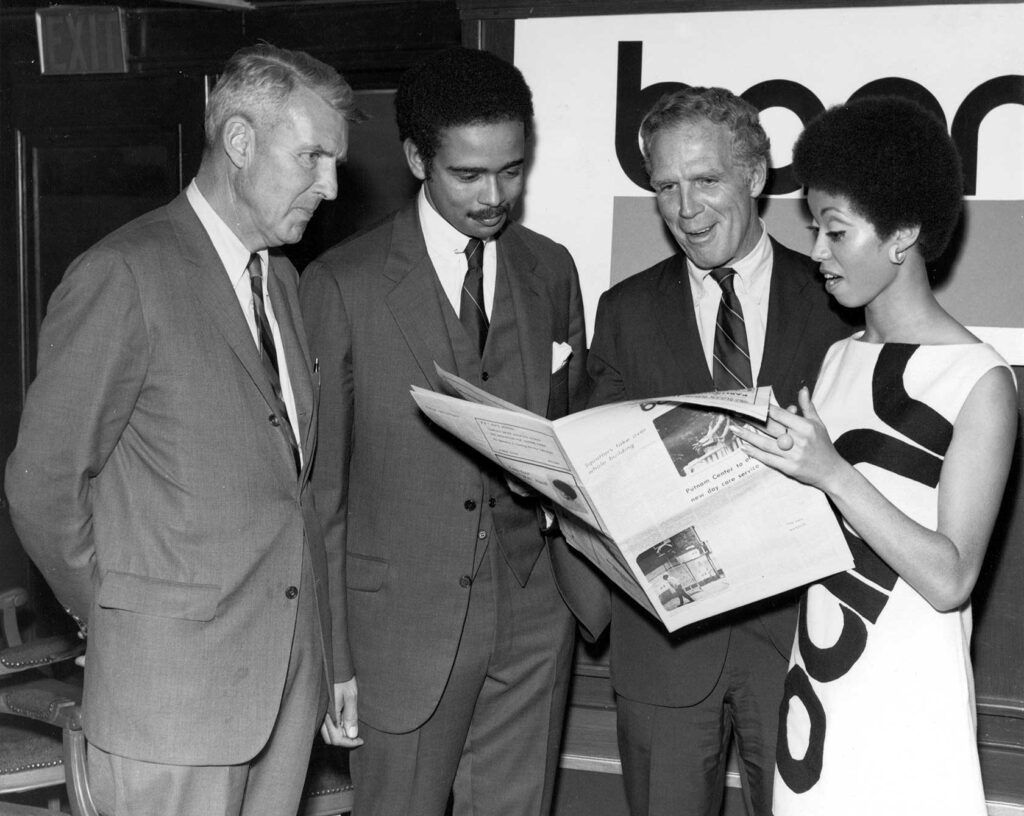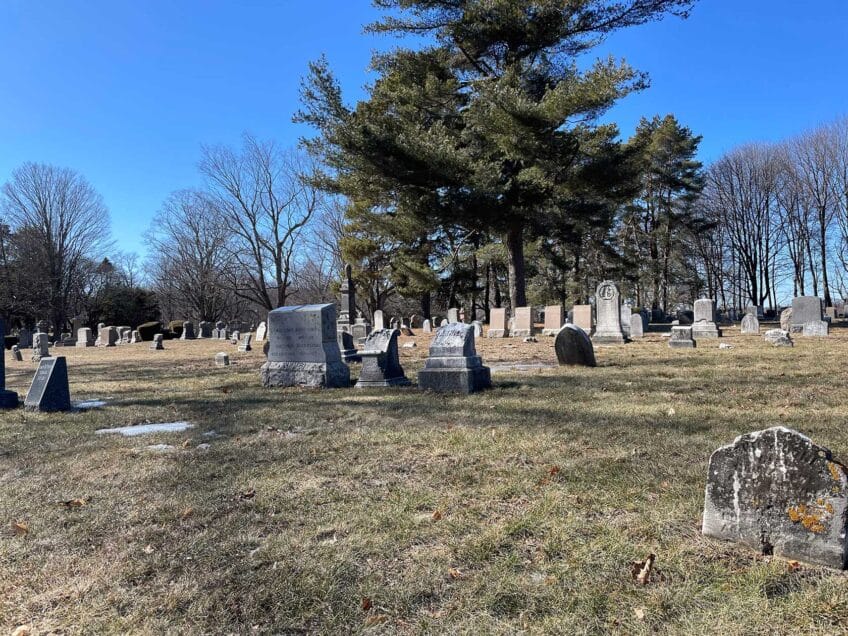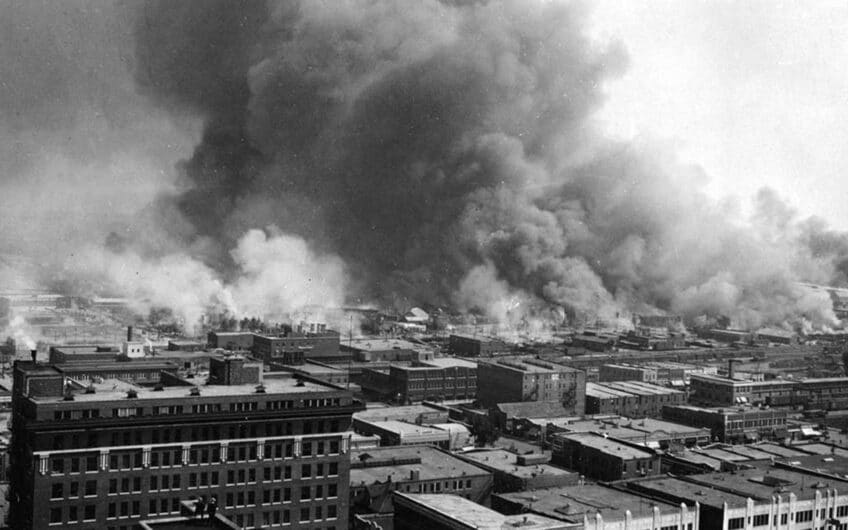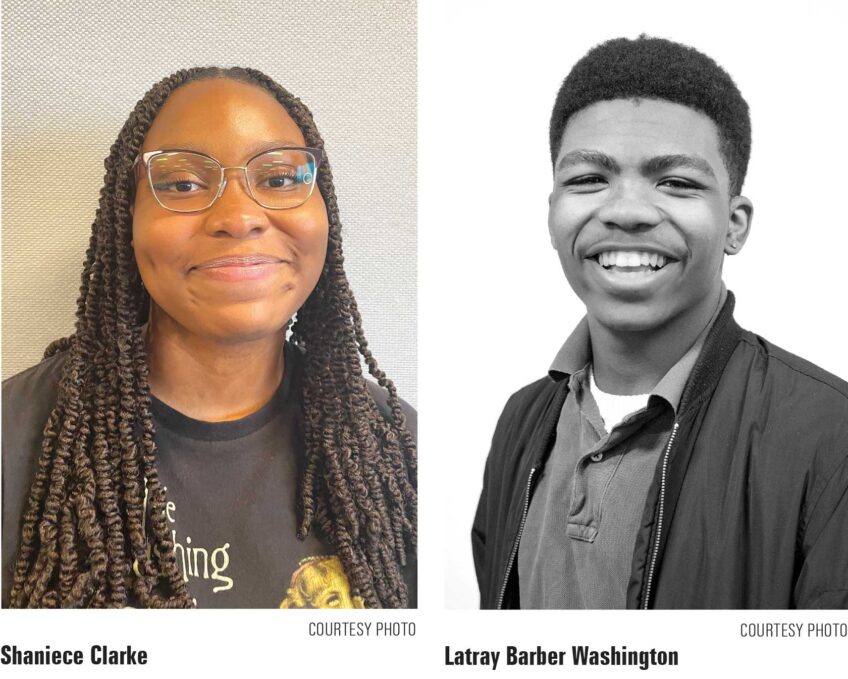Banner has been standard-bearer for Boston community
Newspaper has highlighted Blacks’ contribution to Boston

Editor’s note: This story was originally published in 2015, as the Banner celebrated its 50th year.
It’s been a long and remarkable journey for the Banner, since publisher Melvin Miller first opened the Banner’s doors, stepping into the shoes of William Monroe Trotter and other black publishers who blazed the trail in the 19th and 20th centuries.
The year was 1965, 10 years after the Montgomery Bus Boycott started a peaceful revolution against American apartheid.
It was the year of the Freedom March from Selma and the bloody confrontation at the Edmund Pettus Bridge. It was the year of Malcolm X’s assassination and the passage of the Voting Rights Act by Congress.
Despite gains on the national front, here in Boston, the Rev. Martin Luther King Jr.’s dream to make America redeem its promissory note of life, liberty and the pursuit of happiness was still just a dream.
In Roxbury, schoolchildren pondered the lesson of “All men are created equal” from tattered textbooks, in segregated classrooms, in buildings leaking heat and hope.
A renaissance in the New Boston brought massive development to the old precincts around
Beacon Hill, while slum housing conditions in the black community were exacerbated by policies steering the poor, the black poor, to increasingly concentrated pockets of subsidized tenements.
The black population of Boston pushed to end a system of two Americas, separate and unequal, in their housing and schools, and carried a message of change to the leaders of the city and the state. But, for the first time in a century, there was no messenger. The activist tradition of the African American press, personified in Boston by William Monroe Trotter and The Guardian, had died with the last issue of his newspaper. As the state Legislature grappled with the Racial Imbalance Law on Beacon Hill, there was no black press to record the struggle, no voice from the community to distill the events from the perspective of the people most affected by the inactions of the “Great and General Court.”
 On September 25, 1965, the Bay State Banner stepped in to fill that void and provide the African American community with a written focal point.
On September 25, 1965, the Bay State Banner stepped in to fill that void and provide the African American community with a written focal point.
The paper was the brainchild of Melvin B. Miller, who intended to continue his practice as an assistant United States attorney while publishing the paper as his contribution to the social movement for change. The issues emblazoned across the headlines of the inaugural broadsheet are as immediate and familiar as family memory. “What’s Wrong With Our Schools?” was the aching question printed under the logo. The Gibson School in Dorchester, serving an all-black student population, appeared in a photograph next to an image of the newly-opened Henry Grew School in predominantly white Hyde Park.
Atop the paper, “Whittier St. Project — Interview With Despair” ran across eight columns.
Another story, “Lilly Co. Accused of Discrimination at Roxbury Urban Renewal Site,” reported on worksite bias the same week President Lyndon Johnson signed Executive Order No. 11246, making affirmative action the cornerstone of the federal government’s hiring and contract policies toward blacks.
But mixed in with reports cataloging these shameful disparities were signs that the era of the Boston Radicals was far from over.
“Multiple Service Ctr To Open In Roxbury” and “Parent Group Expands ‘Exodus’” chronicled the initiatives of black citizens to seize control of their community.
In the best tradition of Trotter and his followers, who earlier in the century had thrown down the gauntlet of Northern resistance to the accommodationist policies of Booker T. Washington, Boston’s African American leaders were actively engaged in finding solutions to the problems besetting their community.
Operation Exodus was a particularly powerful example of self-empowerment driven by the need for change. Frustrated by the Boston School Committee’s repeated failures to respond to de facto segregation, the Exodus leaders transported black children from the neighborhoods of Roxbury and Dorchester to less crowded schools in other parts of the city.
The movement, which paved the way for the formation of the Metropolitan Council for Educational Opportunity (METCO) regional school busing program, was just one of many struggles in the march against the status quo on Court Street.
And, along each step of the way, the Bay State Banner was there to record the setbacks and progress. In the Nov. 19, 1965 edition, the newspaper reported on an effort by the Congress of Racial Equality to force commercial enterprises in Grove Hall and Dudley Square to hire more community residents.
The April 4, 1968 Banner, published the day of Dr. King’s assassination, reported on the opening of the black-owned Unity Bank and Trust Company in a Warren Street building designed by black architect Donald Stull.
On the political front, the paper followed the career of Edward W. Brooke, the Roxbury Republican who became the first African American elected to the U.S. Senate since Reconstruction.
Paths of justice
The paper chronicled the rise of attorney Thomas I. Atkins, as the 1967 municipal elections made him the first black to sit on the Boston City Council in 16 years. The same year, state Rep. Franklin Holgate made the first formal move toward the creation of a predominantly black state Senate district, ending the practice of “cracking” black voting strength into several districts. “The time has come for the first black state senator in Massachusetts history,” proclaimed a Banner editorial on June 18, 1970. “If the Legislature cannot provide the opportunity, then the courts will have to.” Under the pressure of court scrutiny, Beacon Hill acceded to the tide of history, and in 1974 Rep. Bill Owens was elected to the Senate seat created by agitation for electoral empowerment.
In 1972, U.S. District Court Judge W. Arthur Garrity Jr. refused to dismiss the Boston NAACP’s comprehensive school desegregation suit, clearing the way for the historic decision that the leaders of public education in the Athens of America had not only tolerated, but promoted, a system of segregation. A year later, Roxbury Community College opened its doors at a former car dealership on Blue Hill Avenue.

Melvin Miller, second from right, celebrates The Banner’s 20th Anniversary along with local dignitaries.
As a repository of community history, the Banner covered with avid interest the formation of the Museum of Afro-American History and its 1971 acquisition of the African Meeting House on Beacon Hill. The paper also covered, and co-sponsored, the Boston Afro-American Artists Association’s first “Sunday in the Park” outdoor exhibition in 1966. These are institutions whose activities have appeared frequently in the Banner’s news pages over the last three decades. It is a testament to the cultural vitality of black Boston, as well as to the perseverance of their leaders to work through the obstacles to survival.
Survival — that’s a theme familiar to the Bay State Banner. What began as essentially a philanthropic sideline quickly became a fulltime obsession for the Banner publisher. The paper’s fight to secure a fair share of advertising from major corporations demanded a tremendous amount of time.
Melvin B. Miller looked at his law practice, looked at the paper, and made his choice. He resigned from the U.S. Attorney’s office and moved full-time into the chair of editor and publisher at the Banner’s headquarters on Ruggles Street in the Dudley Square area.
Witness to history
At one point, Mel Miller was hustling up and copy editing articles and even selling the paper on the streets. John J. Miller, the publisher’s father, was perplexed by his son’s choice of work — from Boston Latin School, Harvard College and Columbia Law School to news-hawker.
The truth of the matter is that no one likes financial pressure and no one likes deadlines. But a paper can’t survive without handling both.
Except for a brief publishing hiatus after the end of its first year and another in 2009, the Banner has juggled the financial and editorial strains of running a community newspaper week in and week out, for over 2,500 issues.

The Banner was there in 1974 when school desegregation was implemented beneath a hailstorm of rocks and bottles. The paper was there when urban renewal came to Roxbury. It was there when Edward Brooke was defeated in the 1978 Senate fight, ending black representation in the upper chamber of the Congress until Carol Moseley Braun’s ascension in 1992.
The Banner covered the election of the late John D. O’Bryant to the Boston School Committee in 1977 and his rise to the presidency of the 13-member body after district representation was ushered in for the school board and city council in 1983.
The Banner followed the acquisition of WNAC-TV by a group of investors from the New England Television Corporation, making the rechristened WNEV-TV the first minority-owned network affiliate in the country.
The Banner covered the landmark 1983 election in which state Rep. Melvin H. King became the first black mayoral finalist in Boston history.
The Rev. Jesse L. Jackson’s presidential bids in 1984 and 1988 were followed avidly in the Banner’s news pages, along with the late Boston City Councilor Bruce C. Bolling’s two-term tenure as president of the city’s legislative body and his own run for mayor in 1993.
The Banner followed the demise of the elected Boston School Committee and has reported on the unfolding debate in America on affirmative action.
The Banner’s coverage followed Boston’s transition from a city with a small black minority population with deep racial divisions to its current status as a majority-minority city where black, Latino and Asian politicians and community activists work together for a more inclusive future. Major milestones included the 1988 election of the first Latino to the state Legislature, Nelson Merced; the state’s first black district attorney, Ralph Martin, appointed in 1992; the 2004 election of Felix D. Arroyo, the first Latino on the City Council; and the state’s first black governor, Deval Patrick, who served from 2007 to 2015.
And the Banner bore witness to the election of the first black president in U.S. history, Barack Obama, elected in 2008.
The enormous dedication needed to cover events with timely and accurate reporting has at times put the Banner itself at the center of the story.
In 1967, a demonstration by welfare mothers in Grove Hall erupted into violence when police stormed the Department of Public Welfare building on Blue Hill Avenue and began clubbing demonstrators. The lead headline in the next edition, “Police Riot in Grove Hall,” represented a radical departure from the police department’s version of events, resulting in an investigation of the incident.
The tough-love rhetoric of the Banner publisher at times has rankled readers in the community as well as subscribers in the halls of power. When Mel Miller applauded Dr. King for speaking out against the war in Vietnam and chided the Nobel laureate’s critics in the NAACP and the Urban League, the Banner lost subscribers. When Mel Miller, in the wake of the passage of civil rights legislation, urged community leaders to forsake the politics of protest and concentrate their attention on building an economic foundation, the Banner came under fire.
When Miller endorsed progressive School Committeeman David Finnegan over Mel King in the 1983 mayoral race, arguing that Finnegan had the best chance of winning and carrying the interests of the black community into City Hall, the Banner got picketed.
But for each of the controversial stories or editorials, there have been thousands of others paying quieter respect to the needs of the community for information, perspective and balance.
These stories — on business openings, protests, funerals, church plays, elections and countless other notes in the rhythm of community life — have been produced over the years by hundreds of Banner employees, many of whom got their start in the news business at the Banner.
Along the way, Banner reporters and editors have used their training to go on to jobs with ABC News, National Public Radio, the New York Times, Wired Magazine and a thousand other places — all of them carrying the legacy of hard work and hard-news reporting.
In the meantime, the Banner in 2015 remains very much an extended family, the tradition carried on in its tabloid pages by younger members of the Miller family and the paper’s staff.
History’s mirror
Over its first 50 years, the Banner has paused at five-year increments to reflect on its progress. And at each stage, one theme remains consistent: the Bay State Banner’s absolute dedication to holding up the mirror of history to the community.
“An understanding of history is essential to enable blacks to refute the uncomplimentary black stereotype which is perpetuated by the media and which is believed by many whites,” wrote Mel Miller on the occasion of the Banner’s 20th anniversary.
“A knowledge of history is the only effective countermeasure,” he added. “Just think of slaves in 18th-century Boston, going to court to sue for their freedom. Just visualize a handful of free blacks in Boston at the turn of the 19th century, rejecting the indignities heaped upon them by whites and establishing their own churches and school. Take pride in the efforts of Boston blacks to rescue runaway slaves and to provide leadership for the antislavery movement.”
The legacy of Boston’s black community is a legacy of self-empowerment. No matter what the obstacles — the setbacks at polling stations or the painful steps to economic revitalization — the African American population of Boston has never shied away from a challenge.
Through the last 50 years, the Bay State Banner has been there to record each step.
“One cannot live in Boston without stepping into the city’s stream of history,” wrote Miller in one editorial. “By some mysterious alchemy, those who dwell here soon become Bostonians, and they become a part of the city’s glorious past.”








